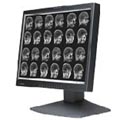Implementing PACS
- 22 November 2004
 Dr Mahibur Rahman
Dr Mahibur Rahman
Over the next three years, every acute trust in England, as well as many in Wales and Scotland, will be changing from conventional film-based radiology systems to a Picture Archiving and Communications System (PACS). This has now been designated a core part of NPfIT – perhaps because it is a quick win for the programme. PACS is one of the elements of the beleaguered National Programme that has universal support – clinicians love its functionality, patients like the more efficient flow through clinics and managers like the impact on radiology waiting times.
The contracts for the five LSP clusters have been awarded, and the rollout of PACS has already begun. Although the government will be funding the actual heart of each PACS solution, there are many other important aspects to consider to ensure a successful implementation of PACS.
Costs
The fact that implementation of areas of the NPfIT may cost more than the initial procurement has been the subject of much press speculation over the last few months; so what are the extra cost to consider in rolling out PACS? Apart from the initial outlay for the actual PACS equipment, software licenses and servers, there are two main areas of expense that Trusts may have to fund – equipment and training.
Equipment could include extra computers, new displays (monitors, projectors, etc), storage capacity (either onsite or external), mobile access devices, and printers to provide hard copies when patients are being seen in units where PACS is not yet available. To make the best use of the funds available for procuring equipment, it is important to consider the needs of the users. For example, displays for use by radiologists will differ hugely in price and resolution to those used at clinical workstations throughout the hospital, which will themselves differ to displays suitable for group meetings and operating theatres.
Training
Almost all staff will need training for the new systems – admin staff who have to book tests, radiology and radiography staff, clinicians who will access the images and IT staff who will provide technical support. Trusts should consider whether it may be more cost-effective to prepare an existing member of staff to help champion training or contract out to one of the various providers of on-site training. At the very least, the PACS provider should always provide basic training as part of the package.
But even the most straightforward implementations, if not carried out without training and consultation, could result in difficulty or even put lives at risk. It is important to plan early for the changeover to PACS, and to involve as many as possible of those that are going to be affected by the change. It is particularly important to understand how clinicians work, and how this may be impacted by PACS – when consultation is inadequate, it can lead to trouble.
Potential problems with PACS
Such a problem occurred in one mid-sized District general hospital, which had PACS supplied as part of a deal under a PDI contract. The new PACS system was implemented only a few months, with a huge training programme to train all staff that would be using it, and it was done on time and on budget (!) Computer workstations were installed on every ward, in outpatient clinics and in consultants’ offices before the system went live. The plan was to eliminate the need to print hard films as soon as the system went live, and using the cost saving in chemicals, running costs of the X-ray printers and archiving costs to help offset the considerable cost of the PACS system.
As soon as the system went live, the orthopaedic surgeons highlighted a key problem. There was no monitor or computer in the operating theatres.
This meant that X-ray images could not be accessed during operations; and since this is an essential part of most orthopaedic operations (for alignment, sizing and planning), the only way to carry on with both routine and emergency surgery was to print hard copies of X-rays for every patient for operation — defeating the point of PACS in the first place. This became routine practice among the radiographers working the day shift, as they dealt with the bulk of the workload and dealt with all the patients coming for planned operations.
Late one night, a patient was admitted with a very unstable fracture. When the patient had X-rays taken, night shift staff were unaware of the protocol, so no hard films were printed. The X-rays were reviewed by a senior surgeon, and the patient prepared for immediate surgery. The team made a request for the hard copies of the X-rays which had been viewed on the PACS, only to find the printer had broken down.
As there was no way to access the images in the theatre, the operation was delayed until a service engineer could be called in to fix the machine; and as it was late at night, it took several hours. The patient risked losing a limb because of this unnecessary delay; but thankfully, the operation was successful.
Although in this case the patient outcome was not badly affected, it did highlight a major flaw in the implementation. Just think of the implications and, indeed, the headlines. if this (young) patient had lost a limb. This is despite a ‘successful’ implementation with adequate training. After consultation with management, radiology and the surgeons, the Trust has now installed mobile workstations with PACS access in all the operating theatres.
Some tips
So how can you ensure a smooth implementation in your Trust? Here are a few tips:
- Plan the changeover early, with consultation from all the major user groups. There needs to be an identifiable lead with whom people can raise any issues.
- Involving clinicians is essential for success, as they will be using the system from day-to-day. Find out when, where and how they access radiological images.
- Don’t forget that you will need a display wherever you have a lightbox now. These could include clinics, wards, meeting rooms, operating theatres, lecture theatres…
- Make sure you get the right equipment for each area. A display that is great for watching videos of endoscopy would be worthless for viewing mammograms.
- Training is one of the key factors to success, and it needs to happen before, during and after implementation.
Dr Mahibur Rahman, Director
Healthcare Imaging UK
Links




